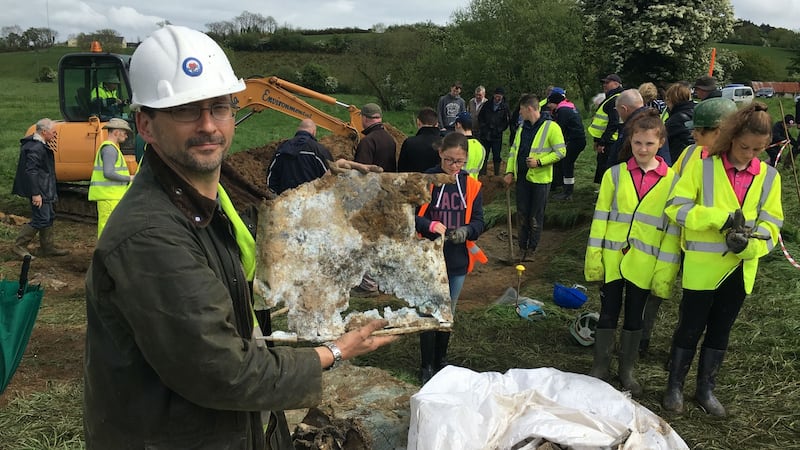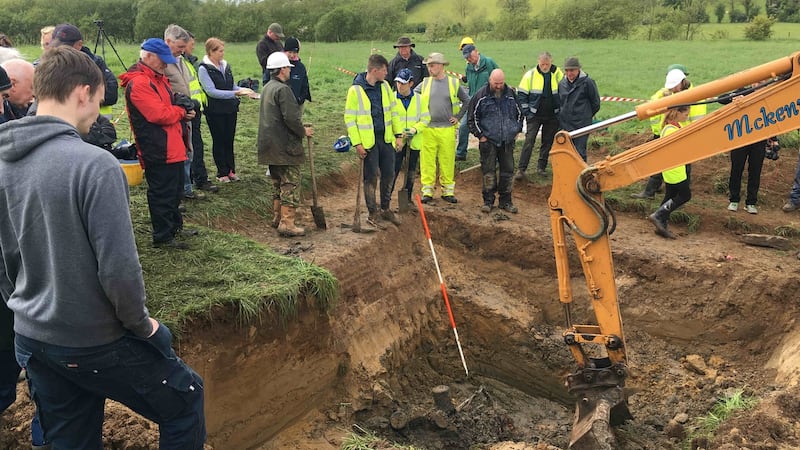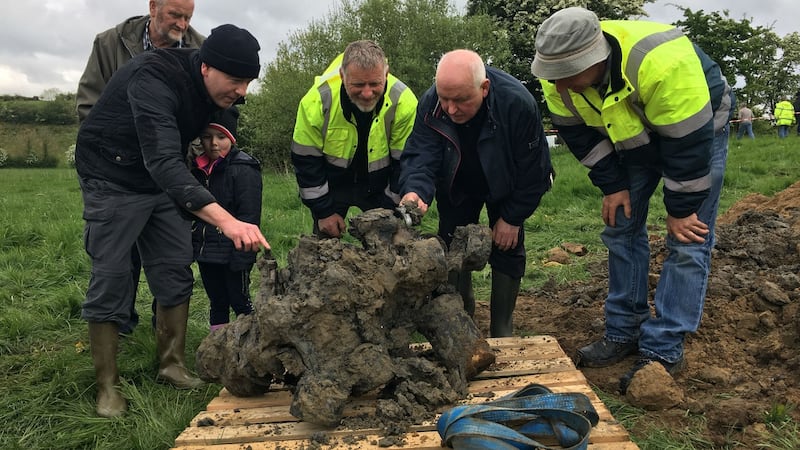What remains of a Spitfire fighter plane which was used to fight in the Battle of Britain has been recovered from a Monaghan meadow.
The Spitfire was part of a weather-monitoring squadron operating out of Northern Ireland in late 1942 during the second World War when its engine failed.
The pilot bailed out safely on the Northern side of the Border and the plane glided on for a distance before crashing in the South.

Rolls Royce engine
Most of the wreckage was cleared by the Irish Army shortly afterwards, but the aircraft's 750kg Merlin Rolls Royce engine and other parts remained buried in the field at Figullar, Emyvale, until this weekend.
“It’s from an iconic aircraft that has flown around and got up to mischief with the Germans during the war,” aviation historian Jonny McNee told The Irish Times minutes after the engine was unearthed on Saturday.
“But it’s a sad-looking thing now. It’s sort of like it had a massive hernia. Its insides are outside.”

McNee, who led the recovery operation, said this particular plane played a pivotal role in the defence of Britain during the war.
“It flew during the Battle of Britain and was shot down [before crash-landing] on three occasions. Eventually it was shot down and damaged so many times that it was declared ‘war-weary’.”
The plane was transferred to the 1402 Meteorological Flight operating out of RAF Aldergrove in Antrim. The squadron was responsible for flying over the Atlantic to gauge weather conditions.
"They would catch the weather and see what was happening, because the weather is important for the convoys coming over the Atlantic and the bombing missions going to Europe.

‘Instruments froze’
“The pilot took off on December 20th, 1942, he was in cloud from 500ft and he said his instruments froze,” NcNee said. “But looking at this engine, I think he had a catastrophic engine failure as well.”
McNee has been licensed by the Museum of Ireland to remove, clean and catalogue the remains before the “best bits” are put on display in the county museum in Monaghan.
His plane disappeared in 1944 and his body and that of his navigator were never found
He hopes the display will form a fitting tribute to the plane's pilot, Flight Lt Gordon Hayter Proctor.
Flight Lt Proctor was unharmed after the crash and transferred to Burma, where he flew combat missions. His plane disappeared in 1944 and his body and that of his navigator were never found.
“We would love to make contact with the family. If there are any extended family we would love to let them know there is going to be a display and a photograph of him,” McNee said.













